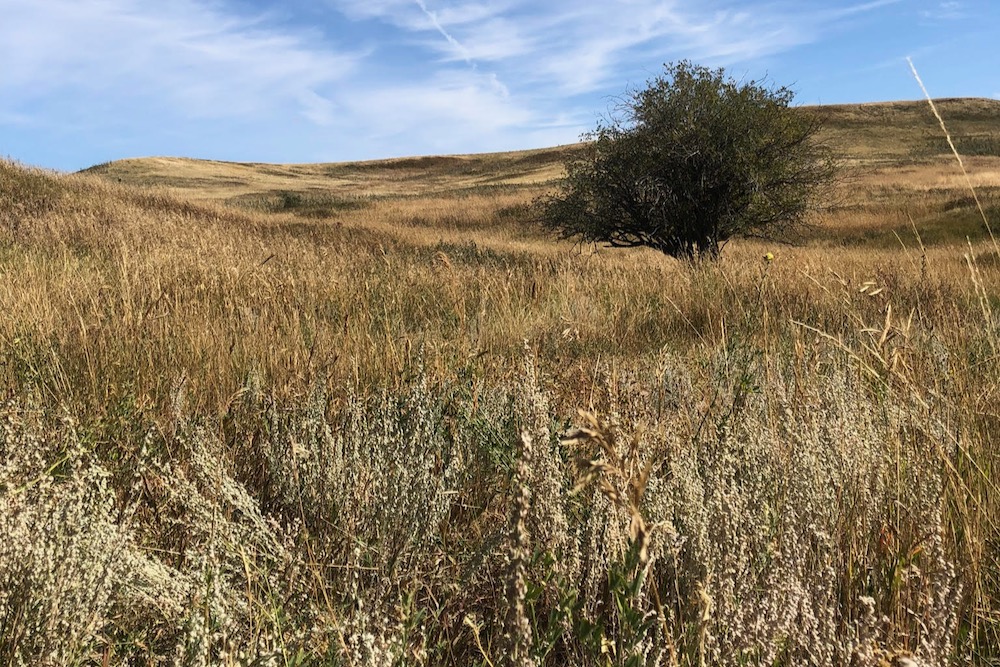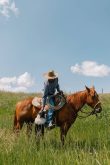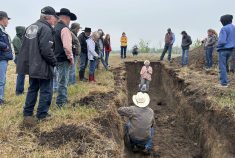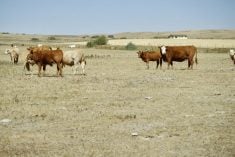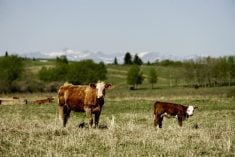In this arid part of the Prairies, sustainable production practices mean the difference between kochia and crops
In the heart of Palliser’s Triangle, Clay and Jesse Williams are proving the value of using cattle to improve depleted soils.
Making a living in this part of the world isn’t easy. Characterized by brown soil zones and often negligible precipitation, the semi-arid steppe reaches from Regina to just east of Calgary. Nestled deep in the centre of the region, on the southeastern border of Alberta, is the Special Areas. Through innovation, land stewardship and resiliency, multi-generational and first-generation operations are making a go of it in this region, and the Williams family is part of that community.
Read Also
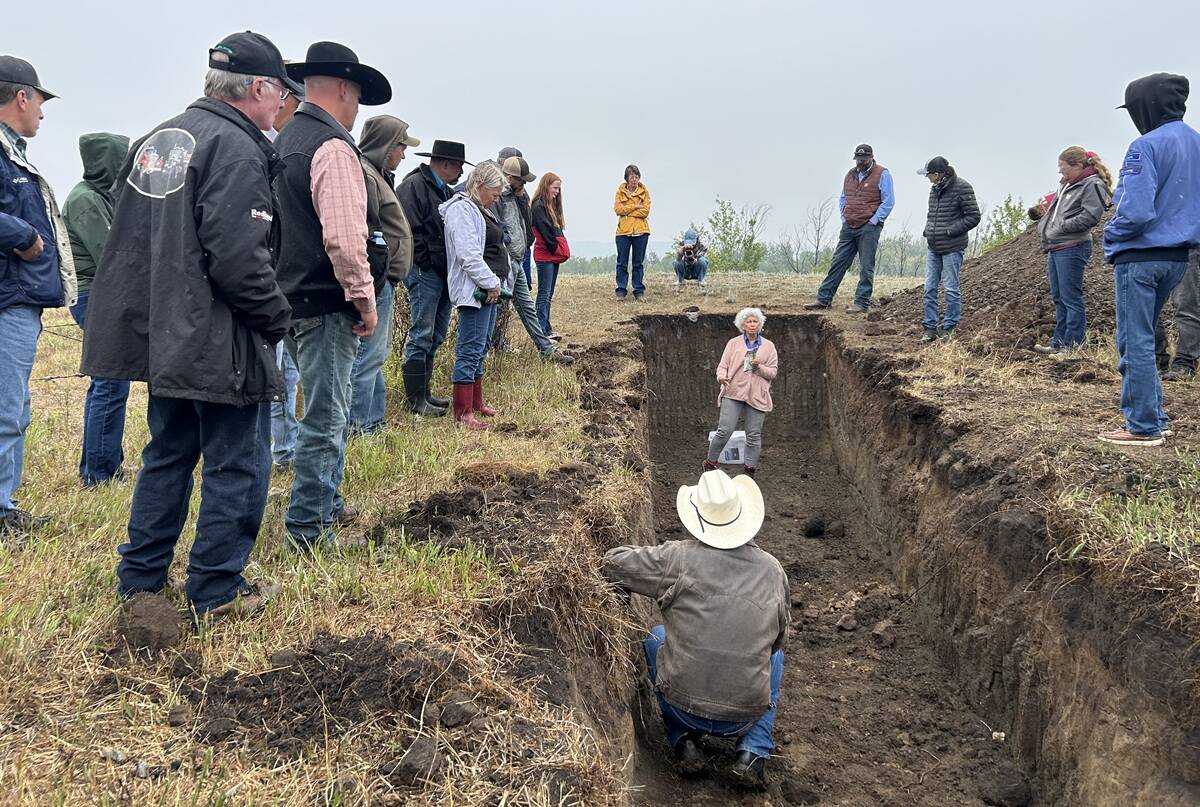
Improving soil health on the ranch
Yamily Zavala, PhD, talks soil health for farmers and ranchers at a grazing club field day at Paradise Hill, Saskatchewan.
Alberta’s Special Areas comprises five million acres broken into three regions, under one unique municipal government system. The entire area, spanning from present-day Stettler, Alta., south and east to the Saskatchewan border, receives on average about nine inches of annual precipitation, snowfall included, and sees about two to three inches of topsoil.
A tough place to farm
In the early 1900s, following some of Alberta’s most challenging winters, settlers poured into the area with dreams of establishing farming and ranching operations. Over time, as operations grew, the reliance on crop production — particularly wheat — gained traction. Years of early conventional tillage, however, left the delicate and dry ecology in the area at risk. Drought conditions in the late 1920s into the 1930s sent the region into a tailspin. Without the necessary rain for crops to survive, and windstorms stealing precious topsoil, conditions became desolate very quickly.
Unfortunately, with the soil, went the settlers. The population quickly decreased from approximately 30,000 over 216 townships to less than 5,000 in under a decade. The rapid decrease in population was catastrophic for the economic conditions in the area, bankrupting more than 36 once-existing municipalities. At that time, the Alberta government established the Special Areas Act, in hopes of revitalizing and stabilizing the region. From the act, the Alberta Special Areas Board came to be in 1938 to provide public land management and extension to help the few residents who remained survive the challenging conditions.
One of the recommendations to come out of the Special Areas Act that had the biggest effect on the area was the reintroduction of cattle into crop-based agricultural systems. Depleted soils after the severe dust storms of 1931 were begging for more organic matter, and cattle were needed.
Following the Dirty Thirties, it became quite clear that any agricultural pursuits in the area needed to involve cattle to rehabilitate the ecology and stability of what soil remained. The benefits of cattle on the landscapes have been more widely recognized in recent years. However, the Special Areas Board was one of the early adopters and promotors of what now tend to be considered present-day “regenerative” agricultural practices. One of the Special Areas Board’s first recommendations was to convert unviable cropland back to forage so the remaining farmers and ranchers could start to recover from the drought and dust storms. Re-establishing forages protected what little topsoil remained. Root beds and organic matter produced by perennial grass crops would stabilize soil aggregates. Grazing those perennials would also add organic matter, while providing landowners with an income stream.
Today’s Special Areas ranchers
Of the five million acres of the Albertan landscape that the Special Areas Board still oversees today, 2.5 million are public land, including community pasture. Between public and private land, grazing is now a far more significant use of land than it was before 1938.
To this day, the population in the Alberta Special Areas still sits around 5,000 people, many of whom have the resiliency to continue ranching in these challenging conditions. Jesse and Clay Williams, along with their young children Harper and Barrett, are a great example of one of those innovative ranching families. Both grew up on ranches, but neither operation was large enough to support multiple households. The Williams family sought opportunity near where Clay grew up, just outside of Hanna, Alta. After purchasing the beginnings of their ranch, they began building their herd of Simmental and Red Angus-cross cattle while maintaining their jobs in town. Though both come from ranching backgrounds, they find themselves carving out a first-generation operation in the heart of Alberta’s Special Areas.
For the Williams family, regenerative practices are and have been a means of survival for their operation since its inception, rather than a way to improve forage performance.
“Since I’ve been here, I have only seen one good rainfall year,” says Jesse Williams.
Annual rainfall in the area usually hovers around only nine inches. However, at interview time this year, the Williams family had seen more like four inches. Protecting what little rainfall does land on the ground is imperative in their world.
“Two to three inches of soil is the textbook norm around here, but in reality, it’s more like half an inch to zero topsoil in some fields,” she says.

Between low rainfall and minimal topsoil, moisture retention can be a challenge, but the Williams family has found success through creative production practices, including applying strategic winter feeding and shelter systems.
Open-bottom bunks and wind fences for winter feeding and shelter on a poor piece of cropland Jesse and Clay intend to return to forage production in the future have been game changers.
“It’s quite obvious where the bunks and wind fences have been,” says Williams.
Moving the infrastructure weekly throughout the winter allows for a more even spread of manure over the quarter. Where manure is stockpiled, organic matter increases, and along with it, moisture retention improves. The results are visible, according to Williams.
“It means the difference between kochia and crops.”
Increasing the existing soil organic matter has had a profound impact on retaining what little moisture the area receives while protecting and building on existing topsoil.
Outside of their ranching operation, Jesse Williams also has an important role within Special Areas. As an agricultural fieldman, she spends a large amount of time working with producers in the area to maximize production and combat invasive weeds. Her role takes her across the three Special Areas, which gives her a greater insight into the variance that does exist within the region.
“Though we face many of the same challenges, conditions do vary quite a bit, from one end of the areas to the next,” says Jesse. “For example, the further north you go, the number of trees found increases significantly, when compared to the southern regions. Vegetation, moisture and soil type variances pose challenges as the Special Areas Board works to co-operatively manage the three zones.”
However, the collective identity of existing in tough conditions contributes to a strong sense of community. Though conditions in Alberta’s Special Areas chased so many families away in the 1930s, something about the region encourages other people to stay.
“Special Areas are a challenging place to exist,” Williams says, “But I do love it.”
Her role with the municipality allows her to see the colour and life that exists beyond the lonely highways that wind across the map. The landscape is painted with sagebrush and fireweed, and abundant with other wild flora and fauna. And there are the people who stand steadfast on the ground that sustains them.
“I sometimes feel the world forgets about us out here,” she says. “But it’s still an amazing corner of the world.”
Emily Lowe, residing west of Nanton, Alta., is a long-time believer in the beef industry and the Western way of life.

